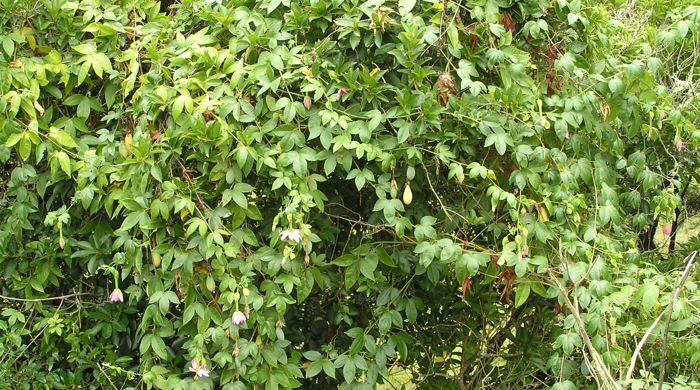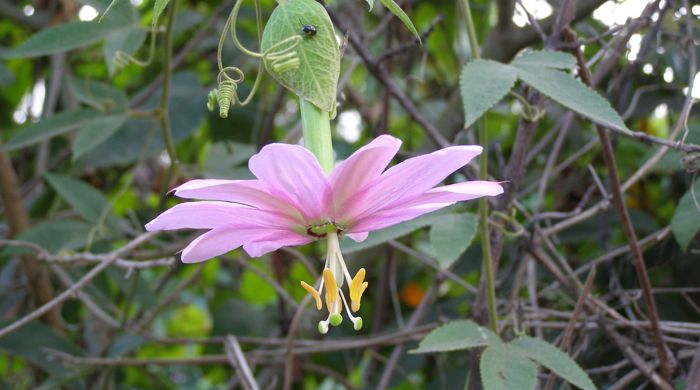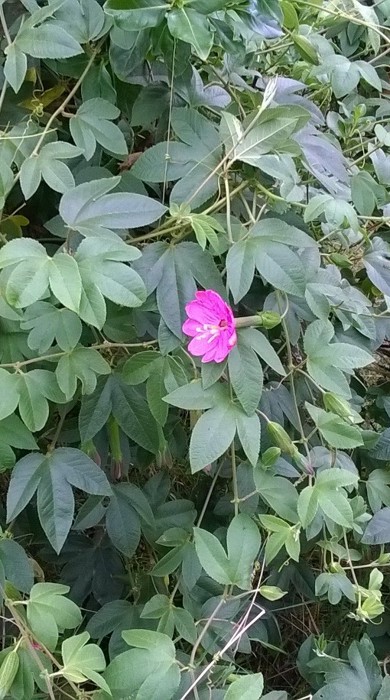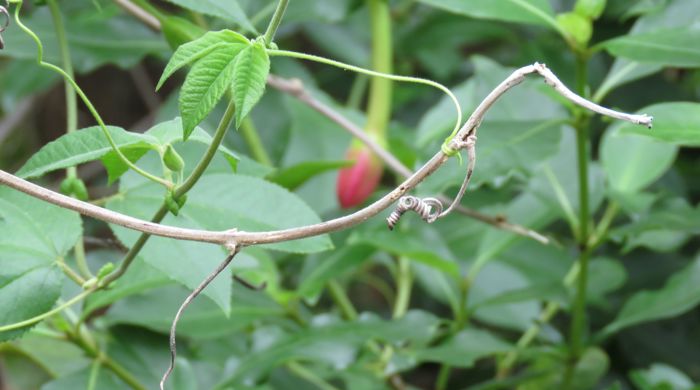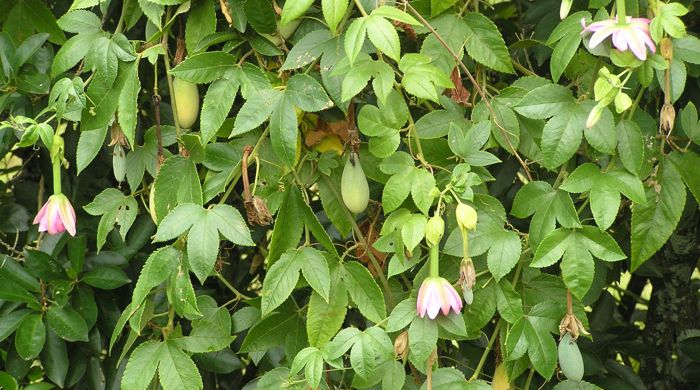Passiflora tripartita var. mollissima, P. mixta and P. tarminiana
Banana passionfruit
Also known as:
Wild blue-crown, wild passion vine
Family: Passifloraceae
Origin: South America
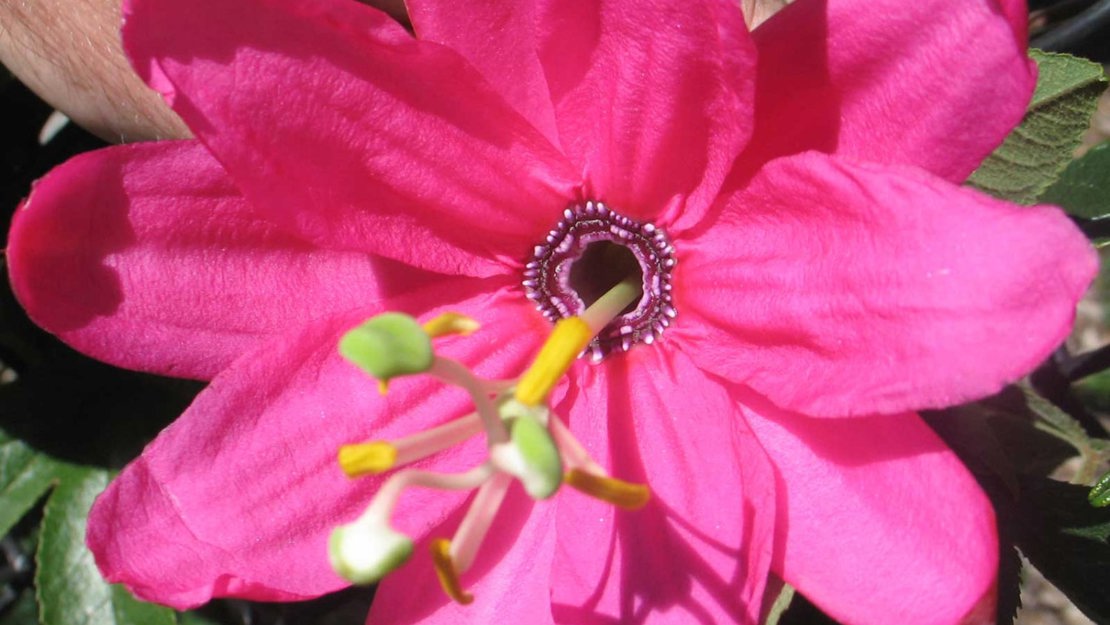
Regional Pest Management Plan (RPMP) status
- National Pest Plant Accord Species
- Whole region — Sustained control
General description
Perennial, high-climbing vine. Stems are cylindrical, covered in tendrils and coated in yellow hairs. Leaves are triple-lobed and < 14 cm long, with a downy top and densely hairy underside. Flowers are pendulous and pink, with a hypanthium < 10 cm long and short petals. Fruit is green ripening to orange/yellow, oblong and has edible pulp.
What you need to know
To help protect our environment:
- You must not breed, distribute, release or sell banana passionfruit. As banana passionfruit is a National Pest Plant Accord species, these restrictions apply within the Auckland region and across the whole of New Zealand.
- You must not plant banana passionfruit within the Auckland region, unless you are transferring an existing plant on your land to another location within the boundaries of the same property.
- You must destroy any banana passionfruit on land that you occupy if it has been planted in breach of the above rules and you are directed to do so by an authorised person.
Habitats
Disturbed and open forest, forest and riparian margins, shrubland, cliffs, sand dunes, roadsides, hedgerows, wastelands, gardens.
Dispersal
Seeds dispersed by birds, possums and feral pigs. Vegetative spread from stem fragments. Human-mediated dispersal through dumping of garden waste and deliberate plantings.
Impact on environment
Smothers native vegetation and prevents seedling establishment. Provides food resource to introduced fauna, particularly feral pigs. Poses risk to horticultural industry as it can host Passiflora latent virus (PLV).
Control
Site Management
Cut and pull vines away from desirable trees and native plants before foliar spraying. Follow up treated areas 3 times per year. Encourage natural regeneration of native plants or replant treated areas where possible after 2-3 treatments to establish dense ground cover and minimise reinvasion.
Recommended approaches
Physical control
Method: Cut vines and leave upper stems to die in trees or dig out.
Plant parts requiring disposal: All parts (except vines if left to die in trees).
Disposal options: Compost in a composting weed bag or remove to greenwaste or landfill.
Biocontrol
Biocontrol is currently not available for this species.
Community agrichemical control recommendations
No qualifications:
For small infestations: Cut stump and paste freshly cut base of stems with metsulfuron gel.
Basic Growsafe certified:
For small infestations: Cut stump and spray freshly cut base of stems with 1g metsulfuron-methyl per 1L of water or cut vines at waist height and foliar spray vines on the ground with 0.5g metsulfuron-methyl per 1L of water.
Certified Handler/Experienced agrichemical user:
For medium to large infestations: Cut vines at waist height and foliar spray vines on the ground with 5g metsulfuron-methyl per 10L of water and 20ml penetrant.
Caution: When using any herbicide or pesticide please read the label thoroughly to ensure that all instructions and safety requirements are followed.
